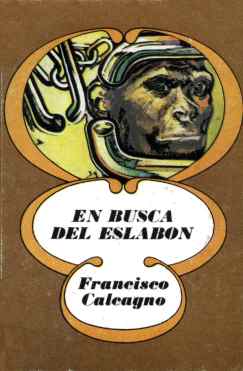3.2.1 “In Search of the Link. A Story of Monkeys,” by Francisco Calcagno (1827 – 1903)

This novel by Francisco Calcagno constitutes an attempt to unite the most advanced scientific concepts of its time, linked to Darwinian discoveries, with the fictionalizing function of literature. From an aesthetic point of view, it does not entirely succeed, but it does present innovative social ideas that contradicted the most cherished ideological precepts of its time.
The development of the plot is dysfunctionally interrupted by definitions more typical of a purely scientific field, its claim to simultaneously constitute an adventure novel is hampered by the lack of dynamism in some passages.
Although the text is not free from racist undertones, as it presents Black people as somewhere between apes and (white) humans on the evolutionary scale, it also constitutes an intense questioning of slavery from a scientific perspective. It should be noted that at the time, abolitionist views were in the minority and censored within the system of colonial subjection.
He does not deny religion but places it in a position inferior to science and, in general, to human culture. In this respect, his positions are linked to Cartesian rationalism and the possibilities of apprehending knowledge through the human intellect, which the text demonstrates through what can be called a voyage of discovery, on the physical and spiritual planes.
A scholarly hilarity runs throughout the text, serving as a literary tool for detecting dogmatic conceptions and attempting to reverse them. The writer’s language is grammatically correct and reflects vast knowledge of various spheres of science and culture, as well as human life as it unfolded in nineteenth-century Cuban society.








